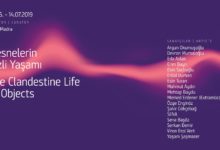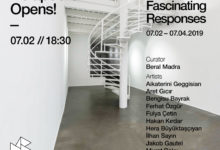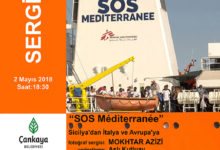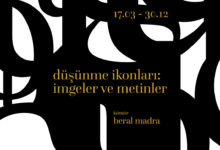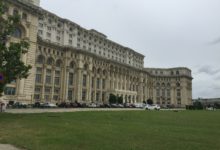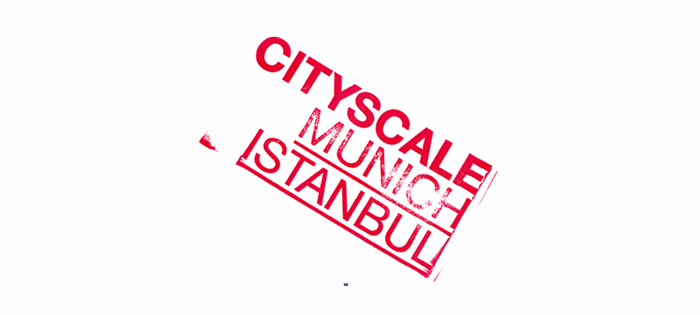
23 July–19.August 2010
Artist: Gülçin Aksoy & Atılkunst, Yeni Anıt, Volkan Aslan, Anne Bleisteiner, Klaus vom Bruch, Carlotta Brunetti & Julia Lohmann, Department für öffentliche Erscheinungen Grubu, Deniz Gül, Gözde İlkin, Suat Öğüt, Kristine Osswald, Hülya Özdemir, Susanne Pittroff, Michaela Rotsch, Martina Salzberger, Robert Stumpf, Ali Taptık, Yasemin Nur Toksoy, Stefanie Unruh ve VIDEOIST
Curators : Beral Madra, Deniz Erbas (Istanbul) und Dr. Cornelia Oßwald-Hoffmann (Münih), Françoise Heitsch (Münih)
LOTHRINGER 13, Münih Kent Sergi Salonu( Städtische Kunsthalle München) http://www.lothringer-dreizehn.com/vorschau/halle/index.html
Münih Kentinin 30 yıldır deneysel güncel sanat alanında uzmanlaşmış Sanat Salonunda Temmuz-Ağustos aylarında gerçekleştirilecek olan Cityscale (Kent Çizelgesi) başlıklı sergi her şeyden önce İstanbul ve Münihli sanatçılar arasında 90’lı yıllardan bu yana çeşitli sergi etkinlikleriyle sürmekte olan kültür alış verişini ve ilişkileri canlı tutmayı amaçlamaktadır.
Serginin arkaalanında önemli bir konuk sanatçı (rezidens) programı vardır ve sergiye katılan İstanbullu sanatçılar Temmuz-Eylül arasında Münihte Villa Waldberta’da (Münih sanatçı konuk evi) bu program çerçevesinde yaşayıp ve çalıştılar ve dolayısıyla Münihli sanatçılarla yakın bir buluşma gerçekleşti.
Beral Madra (BM Çağdaş Sanat Merkezi), Deniz Erbaş, Dr. Cornelia Oßwald-Hoffmann, sanatçı İtalyan kökenli Alman sanatçı Carlotta Brunetti ve Türkiye kökenli Münihli galerici/küratör Françoise Heitsch arasındaki iki yıllık bir işbirliği sonucunda oluşturulan sergide Münih ve İstanbul’un günümüzdeki özellikleri sanat yapıtları üstünden yeniden okunmayı öneriyor.
Cityscale sergisinde izlenen yapıtlar bu iki kentin kendine özgü dış görüntüsünü kullanarak iç görüntüsüne doğru araştırmacı ve eleştirel bir keşfetme öneriyor. Sanatçıları kendilerine özgü deneyimleri, görüşleri ve yorumları yapıtlarda imge seçme ve oluşturma, teknik, malzeme çeşitliliği ve disiplinler arası geçişlerin kullanımında farklılık olarak belirginleşirken, kesişmeler daha çok konusal alanda, bu iki kentin küresel kent olma özelliklerindeki ortaklıkların yarattığı gerçeklerde gözlemleniyor.
Bu sergi Münih’te 22.07. – 19.09.2010 tarihleri arasında Münih Eyaleti Kültür Bakanlığı, Lansche Fahnen Unterhaching, Bayerische Staatskanzlei, Institut für Auslandsbeziehungen ve Villa Waldberta ( www.villawaldberta@t-online.de) desteğiyle, proje mekanları Spiegel (http://www.lothringer13.de/spiegel/) ve Laden (http://laden.lothringer13.de/space/) , Toptancı Halindeki Belediye destekli proje mekânı „Klohäuschen (http://www.zwischenzimmer.de/klohaeuschen) ve Gabelsberger sokağındaki yeni sanat proje mekânı E324’de (http://www.e324.de) gerçekleşti.
Beral Madra sergi dolayısıyla Lothringer 13’de „Istanbul with its Intensities in Visual Art“ (Görsel Sanatlardaki Yoğunluklarla İstanbul) başlıklı bir konferans verdi. (21.07.2010, saat 20.00)
[portfolio_slideshow]
CITYSCALE-ISTANBUL
SIEMENS ART GALLERY
14 September- 13 November 2011
Cityscale (Şehir Ölçeği), 14 Eylül 2011 tarihinde İstanbul ve Münih şehirleri çağdaş sanat ortamları arasında uzun soluklu işbirliğini amaçlayarak gerçekleşti.
Küratörler: Almanya’dan Françoise Heitsch ve Türkiye’den Deniz Erbaş’ın,
Danışman küratörler: Dr. Cornelia Osswald Hoffmann ve Beral Madra
Sanatçılar: Gülçin Aksoy, Atıl Kunst, Annegret Bleisteiner, Klaus Vom Bruch, Carlotta Brunetti, Department für öffentliche Erscheinungen, Deniz Gül, Julia Lohmann, Suat Öğüt, Hülya Özdemir, Susanne Pittroff, Michaela Rotsch, Ferhat Satıcı, Robert Stumpf ve Yeni Anıt
Cityscale (Şehir Ölçeği) sergisi, İstanbul ve Münihli sanatçılar arasında 90’lı yıllardan bu yana sürmekte olan kültür alışverişini ve ilişkilerini canlı tutma amacını taşıyan sanatçıların üç yıl süren işbirliğinin ardından İstanbul’da gerçekleşen ilk etkinliktir
Kamusal alan yerleştirmeleri, video seçkileri, sergi sunumları ve panellerin eşlik ettiği sergi kapsamında, Münih ve İstanbul’un şehir dokuları ve katmanları sanat yapıtları üzerinden sanatseverlerin yorumuna sunuluyor. Sergide yer alan yapıtlar bu iki kentin kendine özgü dış görüntülerini kullanarak iç görüntülerine doğru araştırmacı ve eleştirel bir keşif alanı açıyor. Sanatçıların kendilerine özgü deneyimleri, görüşleri ve yorumları yapıtlarda imge seçme ve oluşturma, teknik, malzeme çeşitliliği ve disiplinler arası geçişlerin kullanımında farklılık olarak belirginleşirken, kesişmeler daha çok konusal alanda, bu iki kentin küresel kent olma özelliklerindeki ortaklıkların yarattığı gerçeklerde gözlemleniyor.
CONCEPT TEXT:
In his work Civitas of Seeing, dated 1989 Richard Sennett describes the city life as:
“A city isn’t just a place to live, to shop, to go out and have kids play. It’s a place that implicates how one derives one’s ethics, how one develops a sense of justice, how one learns to talk with and learn from people who are unlike oneself, which is how a human being becomes human.”
The city today is an urban space for the vast populations and individuals in which they live, shop and struggle with daily matters. Within this tumult, justice, dialogue and human virtues, which people keep harping on, are postponed to a later date. It can be stated that contemporary art works that deal with the realities of the city widely focus on the characteristics of the city mentioned in Sennett’s quotation.
Istanbul is a major organism that promises more than all things that is said on it and probably will be said on it from now on, and it is more than all attributed clichés and images. Only a few cities can be mentioned as equal to its scale, economic power and value.
Beyond all its uniqueness, Istanbul is also breathing with its inhabitants like all other cities, and it is under an ongoing political pressure that makes all cities one and the same. Yes, today all cities and people strolling in and between the cities are similar to each other. Indigenousness and foreignness, use and consumption of city, transportation, nutrition, entertainment, relaxation, and self-improvement issues are formed and re-invented in a similar way. Consequently all city people are similar to each other as never before and this phenomena appears as a giant image tent (neo-liberal tent) covering the uniqueness of cities.
I wonder how do artists can breathe under this tent. When we compare the answers to this question about Istanbul as a megacity to the possible answers about Munich, a city in the centre of Europe and Bayern of Germany, the totality of the answers prove again the power of standardization created by the aforementioned tent but also the diversity of contemporary art language. It also proves that art is still a guide to make holes in the tent through which one can express differences in production within the similarity of styles.
The main common aspects the artists of these two cities share are of documentary character that reveal the interpretations of a reality as seen from a particular position. Dealing with social, cultural and political situations, historical moments and private, personal and individual details, this is an antithetical position to reality that accentuates the position of a witness. However, here the correlation between reality and art also opens a door for new possibilities, for different point of views and for new proposals in respect of our relation to the realities. The work is not only revealing the reality, but also indicating the way of constructing it. As soon as it confesses that our relation with reality is indirectly depended on the construction process of the reality, it also insinuates the potential of alteration of the reality.
The works in the exhibition deal with spaces, processes, objects and their relational positions, as well as with communication channels that effect city life, and consumption habits, movements, thinking and action models of the people. Works with different techniques and attitudes are displayed side by side indicating many neglected or invisible details that in fact fostering the texture of the city. Thus, even if it has different historical, geographical and cultural components, a total scape consisting of the organism that we name “the city” is being revealed on a common ground of individual design, imagination and apprehension and it is presented to be debated.
BERAL MADRA-DENİZ ERBAŞ
——————————————————-
The project of Cityscale is conceived and organised by Beral Madra and Deniz Erbaş from Istanbul, Carlotta Brunetti, Dr. Cornelia Osswald Hoffmann and Francoise Heitsch from Munich to create a sustainable contemporary art relationship between the two cities.
The Cityscale project was exhibited for the first time in 2010 between 23rd July and 19th September, in LOTHRINGER 13, Munich City Exhibition Hall (Städtische Kunsthalle München).
The project consisted of public space installations, an anthology of video works curated by VİDEOİST, and the exhibition with the works of Gülçin Aksoy, AtılKunst, Volkan Aslan, Annegret Bleisteiner, Klaus vom Bruch, Carlotta Brunetti & Julia Lohmann, Department für öffentliche Erscheinungen, Patricija Gilyte, Deniz Gül, Gözde İlkin, Suat Öğüt, Kristine Oßwald, Hülya Özdemir, Susanne Pittroff, Michaela Rotsch, Martina Salzberger, Robert Stumpf, Ali Taptık, Yasemin Nur Toksoy, Stefanie Unruh.
Artists from İstanbul lived and worked in Munich in Villa Waldberta within the guest artist program and produced works.
The exhibition in Munich was realized by the support of Landeshauptstadt München Kulturreferat, Villa Waldberta, Internationales Künstlerhaus der Stadt München, Bayerische Staatskanzlei and Institut für Auslandsbeziehungen.
In Istanbul, Cityscale exhibition is realized in Siemens Sanat Gallery with the works of the artists as documented sin this catalogue. Public space installation and performances will be realized by Michaela Rotsch, in Sirkeci and by Department für öffentliche Erscheinungen in the streets of Istanbul.
Françoise Heitsch – Deniz Erbaş, August 2011
[portfolio_slideshow id=1227]

